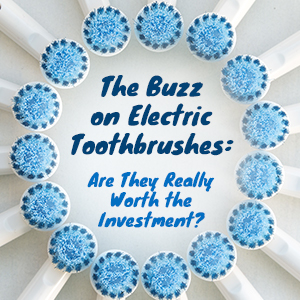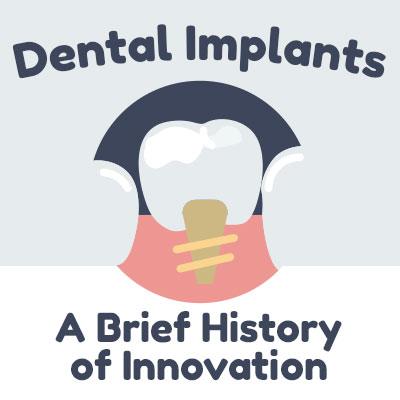Orthodontic treatments have been around for centuries, but luckily the materials and methods used have been updated with the expansion of education and technology. If they hadn’t, you might see metal bands or golden wires wrapped all the way around teeth instead of small brackets held in place by wires—or worse, cords made from animal intestines. You might be thinking, “Yikes on bikes, I’d never!” but the reason people in those ancient times were desperate enough to seek teeth straightening through these means is that orthodontics serves more than a cosmetic purpose.
Straight teeth tend to be healthier teeth as proper alignment makes for a happy jaw and simpler oral hygiene routines for better oral health. This is a primary concern for Dr. Case of Family Dental Health, who wants Portland families and friends to have healthy, happy smiles. However, when braces are recommended, many patients ask, “Do they hurt?” Dr. Case is happy to answer the question.
Where Did My Teeth Go Wrong?
First, if you’re cursing the alignment of your teeth and wondering why they couldn’t stay in line—please don’t. We know that hearing you or your child will need orthodontic treatment isn’t the most welcome news, but it’s a very common need. In fact, the American Association of Orthodontists estimates that at any given moment, over four million people in the United States are undergoing orthodontic treatment, and 25% of them are adults.
The reasons for misaligned teeth are varied, ranging from having a jaw that’s too small for each incisor, canine (or cuspid), and molar to co-exist in harmony, to habits such as chronic and prolonged thumb and pacifier sucking in childhood. While this does suggest alignment can be helped by the avoidance or breaking of habits that can negatively affect your bite (or your child’s), genetics and jaw size are factors not entirely in your control.
Orthodontics can save the day—or rather, the days post-treatment when your teeth have been straightened and your bite has aligned like the stars of Orion’s Belt, which we think is a fitting simile because your eyes may twinkle when you see your renewed smile! There are different types of orthodontic treatments available today, but to answer the frequently asked question we posed earlier, we’ll focus on…
The Tried & True
Traditional braces remain one of the most popular forms of orthodontic treatment because of their ability to improve nearly any bite and smile. While treatments like Invisalign® or SureSmile® continue to innovate their aligners to treat a wider variety of cases, they don’t provide orthodontists (or general dentists who have received the advanced training and education needed to perform orthodontic treatment) with the same amount of control over the movement of individual teeth.
If you or your child have a severe malocclusion, teeth that are rotated more than 20 degrees from their proper position, teeth angled more than 45 degrees, or spaces between teeth that are larger than 0.6 centimeters, braces are the prescription that will create the smile transformation you’re looking for. This is because braces don’t just apply pressure to the tops of your teeth—they also encourage the tooth roots to shift. When we mention shifting of tooth roots, the question we set out to answer in this blog becomes emphasized, doesn’t it? So, without further ado…
You Will Feel Some Pressure
It’s one thing to go from a mouth free of metal, and another thing entirely to have metal brackets, wires, and bands placed on your teeth. That’s one difference that comes with an adjustment period. But what about the shifting of teeth? Let’s take a look at what’s moving:
- Dentin – A hard, dense, bone-like tissue within your teeth that lines the pulp cavity. Dentin is harder than bone but softer than its exterior, which is our next point!
- Enamel – Enamel is the hardest substance in your body and coats each tooth. When you experience tooth sensitivity, it’s usually an indication of sensitive enamel or an infection that has gone beneath your enamel.
- Cementum – Connective tissue that binds your tooth roots firmly to your gums and jawbone.
- Periodontal Ligament – Tissue that helps keep teeth firmly held against the jaw.
There’s a lot of strong material at work in your mouth, so the honest answer is that you’ll definitely experience some discomfort during your treatment with braces. The good news is, there are ways to treat each symptom you may face while your teeth shift into alignment.
If you’re experiencing pressure and pain from the tightness of your braces and the movement of your teeth, you can suck on an ice cube (don’t chew!) or apply a cold compress to the outside of the face. If your discomfort is due to wires and brackets rubbing against your cheeks and lips, dental wax can be applied as a barrier. You can also take anti-inflammatories like ibuprofen to reduce soreness and prevent irritation to your tongue by avoiding the action of running it along your braces.
The most important thing you can do to prevent additional discomfort is remaining diligent in your oral hygiene regimen. Trust us, you do not want to add gum disease treatment to your orthodontic treatment plan.
If you have more questions about orthodontic treatment, Dr. Case would love to hear from you! Or, if you’ve already gotten braces and are looking for suggestions on how to adapt while you wear them (remember, this is temporary and your results will be worth it!), don’t hesitate to contact your Portland dentist, Dr. Case at Family Dental Health and schedule an appointment today!
The content on this blog is not intended to be a substitute for professional medical advice, diagnosis, or treatment. Always seek the advice of qualified health providers with questions you may have regarding medical conditions.

 Electric toothbrushes have been on the market for years now, and whether you’re a devout user or a critical skeptic, you may still be wondering:
Electric toothbrushes have been on the market for years now, and whether you’re a devout user or a critical skeptic, you may still be wondering:  Today’s
Today’s